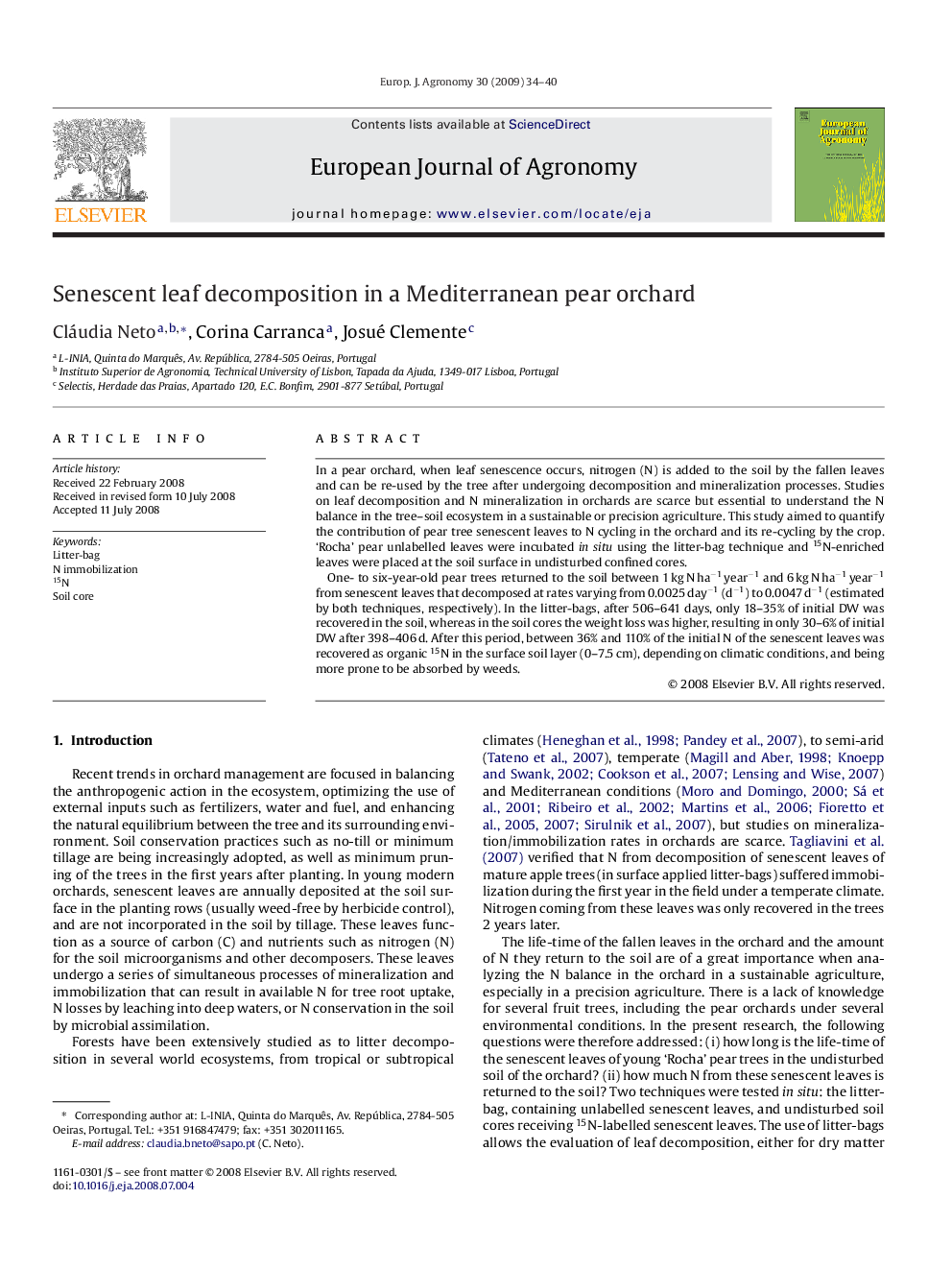| Article ID | Journal | Published Year | Pages | File Type |
|---|---|---|---|---|
| 4509487 | European Journal of Agronomy | 2009 | 7 Pages |
In a pear orchard, when leaf senescence occurs, nitrogen (N) is added to the soil by the fallen leaves and can be re-used by the tree after undergoing decomposition and mineralization processes. Studies on leaf decomposition and N mineralization in orchards are scarce but essential to understand the N balance in the tree–soil ecosystem in a sustainable or precision agriculture. This study aimed to quantify the contribution of pear tree senescent leaves to N cycling in the orchard and its re-cycling by the crop. ‘Rocha’ pear unlabelled leaves were incubated in situ using the litter-bag technique and 15N-enriched leaves were placed at the soil surface in undisturbed confined cores.One- to six-year-old pear trees returned to the soil between 1 kg N ha−1 year−1 and 6 kg N ha−1 year−1 from senescent leaves that decomposed at rates varying from 0.0025 day−1 (d−1) to 0.0047 d−1 (estimated by both techniques, respectively). In the litter-bags, after 506–641 days, only 18–35% of initial DW was recovered in the soil, whereas in the soil cores the weight loss was higher, resulting in only 30–6% of initial DW after 398–406 d. After this period, between 36% and 110% of the initial N of the senescent leaves was recovered as organic 15N in the surface soil layer (0–7.5 cm), depending on climatic conditions, and being more prone to be absorbed by weeds.
